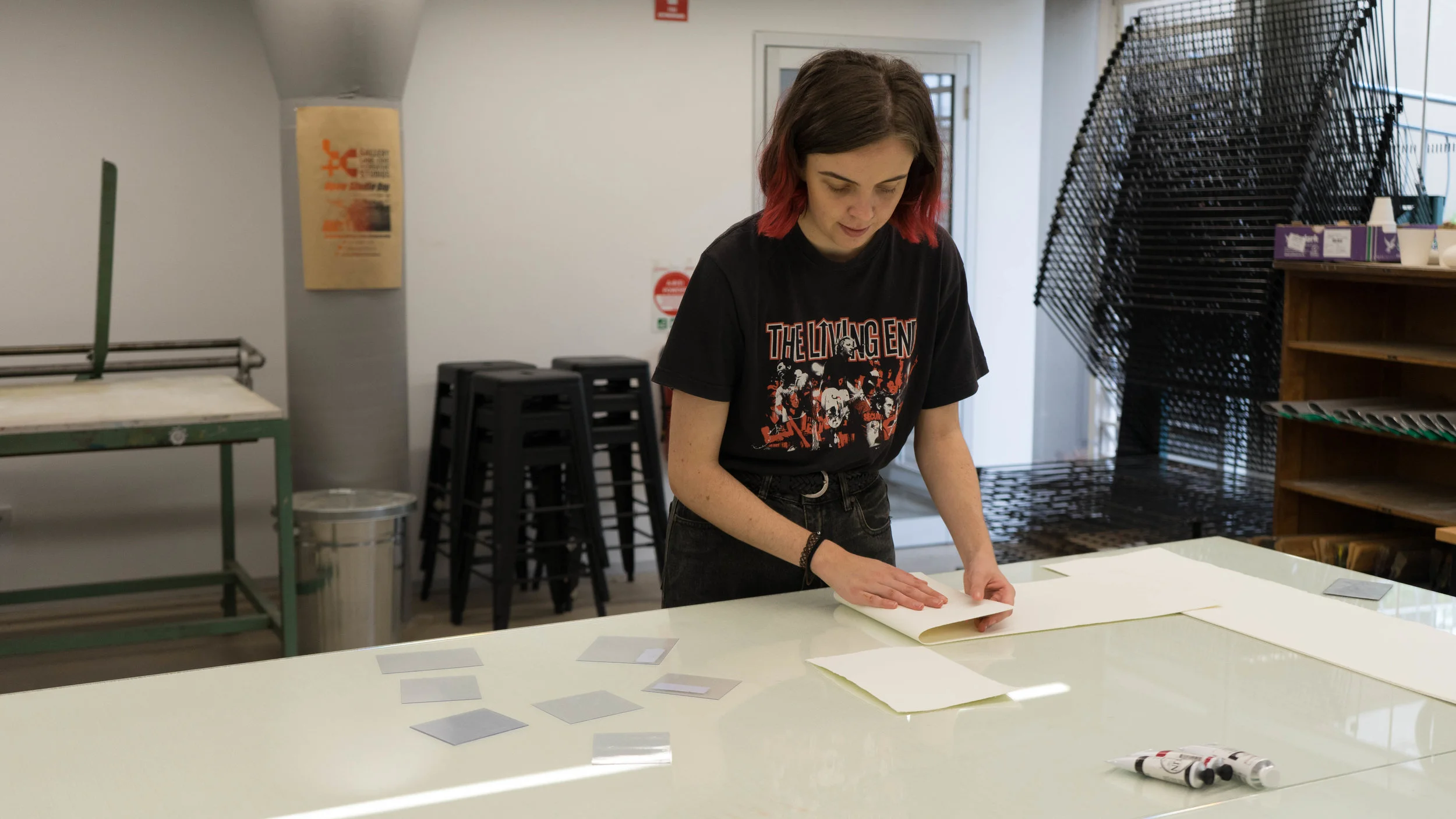Photography by Jorden Cooper.
Jennifer Brady
Jennifer Brady is a Sydney based emerging artist who recently completed a Bachelor of Fine Arts (Honours) at the University of New South Wales - Art & Design. Primarily engaging with language and ‘word art’, she has been actively involved in group shows since mid 2016 in Sydney, Melbourne and Brisbane. 2018 saw Brady execute her first solo exhibition Betwixt and Between at Gaffa Gallery, Sydney; and both exhibit and perform at Brunswick Street Gallery, Airspace Projects, Bedrock Collective’s Long Weekend, and Women In Music Empowerment Day among others. Her practice has recently extended into curatorial realms, co-curating the outdoor exhibition Piece of Mind (2018) at Gallery Lane Cove + Creative Studios with Yanchen Li for Mental Health Month, and curating the group show d.i.why? (2019) at Kudos Gallery, Paddington. Brady was a finalist for the Lethbridge 10,000 Small Scale Art Award (2017), Jenny Birt Award (2018), and the Kudos Emerging Artist and Designer Award (2018). In 2019 Brady is anticipating a second solo exhibition and further experimentation into a curatorial practice.
Tell us about your creative process. What drives your practice?
I guess all my work comes from me and my personal experiences. I feel like art is a materialisation of the person who made it - a depiction of their interests, fears, thoughts, desires and entire person - and because of this I feel like the work that I make can only be a recording of experience, it just makes sense. My experiences of thinking, overthinking, panic, anxiety, paranoia are the key subjects of my work, however I interpret them in a slightly vague way. These are things that are specific to me, but I feel like they can be used to communicate a more communal experience of lived mental health and failings. In this way my work isn’t so much about me, but rather a representation of my experience, which is not an exclusive moment that no one else can understand.
My practice approaches this ‘mundanity’ of personal failure primarily through written and spoken language - I put these things both under the umbrella of ‘drawing’. The words I use are often disjointed and cyclical, trying to replicate moments of overthought and stress - articulating something without actually saying anything. This is reiterated through my making and the way I install my work. The works in my installations are often ‘over-made’ - going through multiple processes to create an object that could have been made in just one step - and installed in a very haphazard way, as a means of expressing a sort of frustration with the self and mental states.
How do the processes of printmaking function within/contribute to your practices of expanded drawing and performance?
Printmaking sort of holds itself as a preliminal stage in my practice. My prints are often used to create something bigger or serve as a catalyst for a work - the print is never the final resolved work, but rather just a step in the ladder. Monoprinting and etching are the key methods I use, and I think it’s because I find them so similar to (traditional) drawing. I also find the action of writing backwards really productive for my practice. When I go to write on a plate or on a monotype I just kind of guestimate my way through the words and this pretty much always results in some sort of spelling mistakes or backwards letters when I go to print. These mistakes tend to look more organic than if I were to just intentionally try to make my writing look like a 3 year old did it.
Are there any female printmakers or artists that influence you?
When I first started developing my practice Gossia Wlodarczak was a big influence for me, and still is to a degree. The way she uses performance in her works is super subtle and the whole ‘autonomous drawing’ thing is something I find super mesmerising. On the printmaking front, Tracey Emin’s monotypes are way up there. She uses text in such a raw and emotive way that is soft and subtle, yet still quite harsh and messy.
Finally, what exciting projects are you working on at the moment?
This year has been more quiet for me, last year I did a LOT of group shows and it was... a lot. This year I’ve been trying to really think about shows and projects I’m taking part in, which I think is important after coming out of a hectic 4 years at uni. I’ve stepped into more curatorial and collaborative roles, looking at my practice beyond just a name on a show lineup. I’m super excited to be installing my second solo exhibition next week: This is a Conversation Piece.This show is a collaborative project between myself, and curator (and fellow MTR cofounder Sarah Rose), and it’s been a really interesting and productive space for both of our projects. Really excited for how it will turn out!
I’ve also put together a group show about language and text based art opening in July at AD Space, UNSW Art & Design. Stay tuned for more info!


